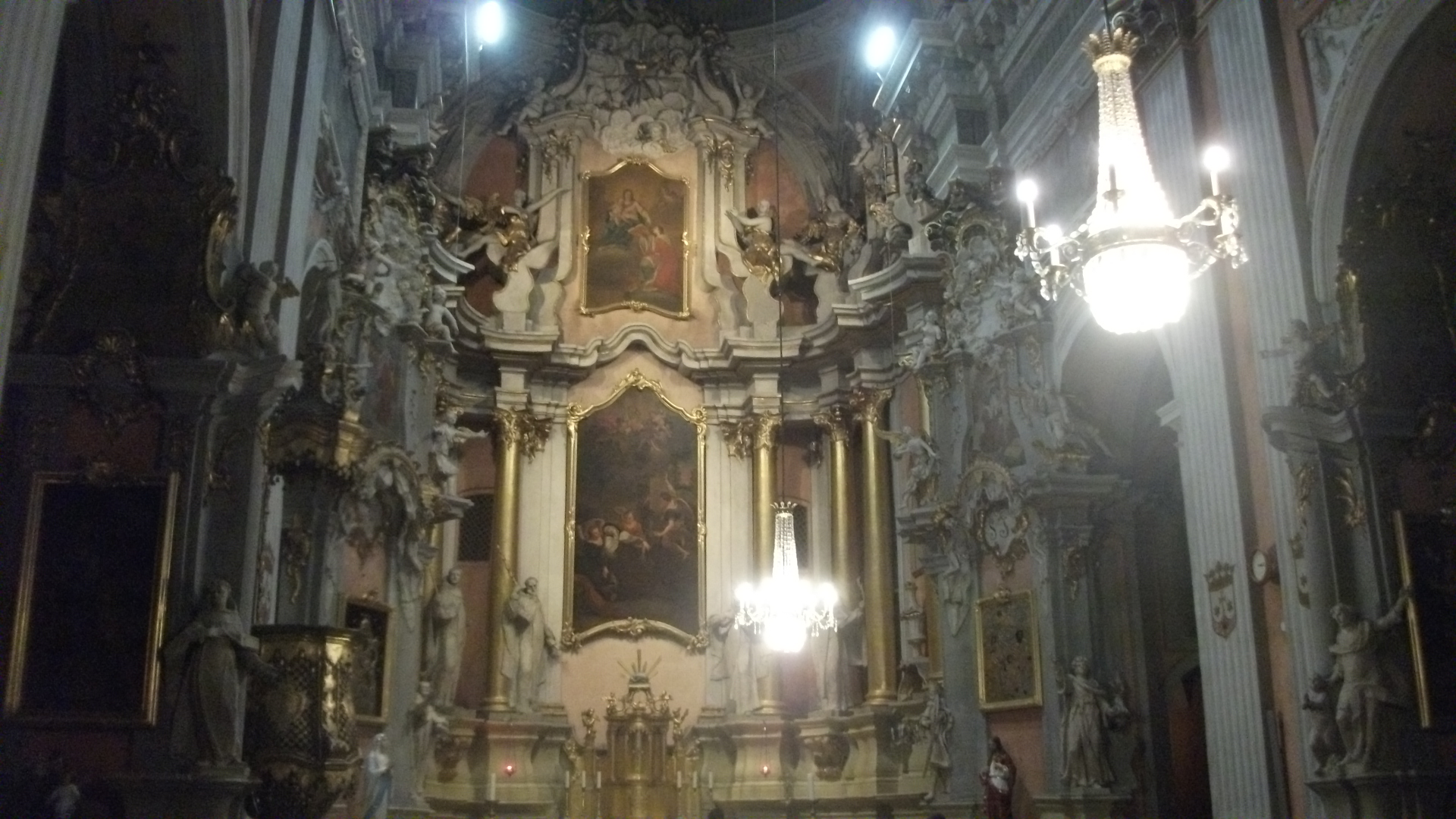Views: 272
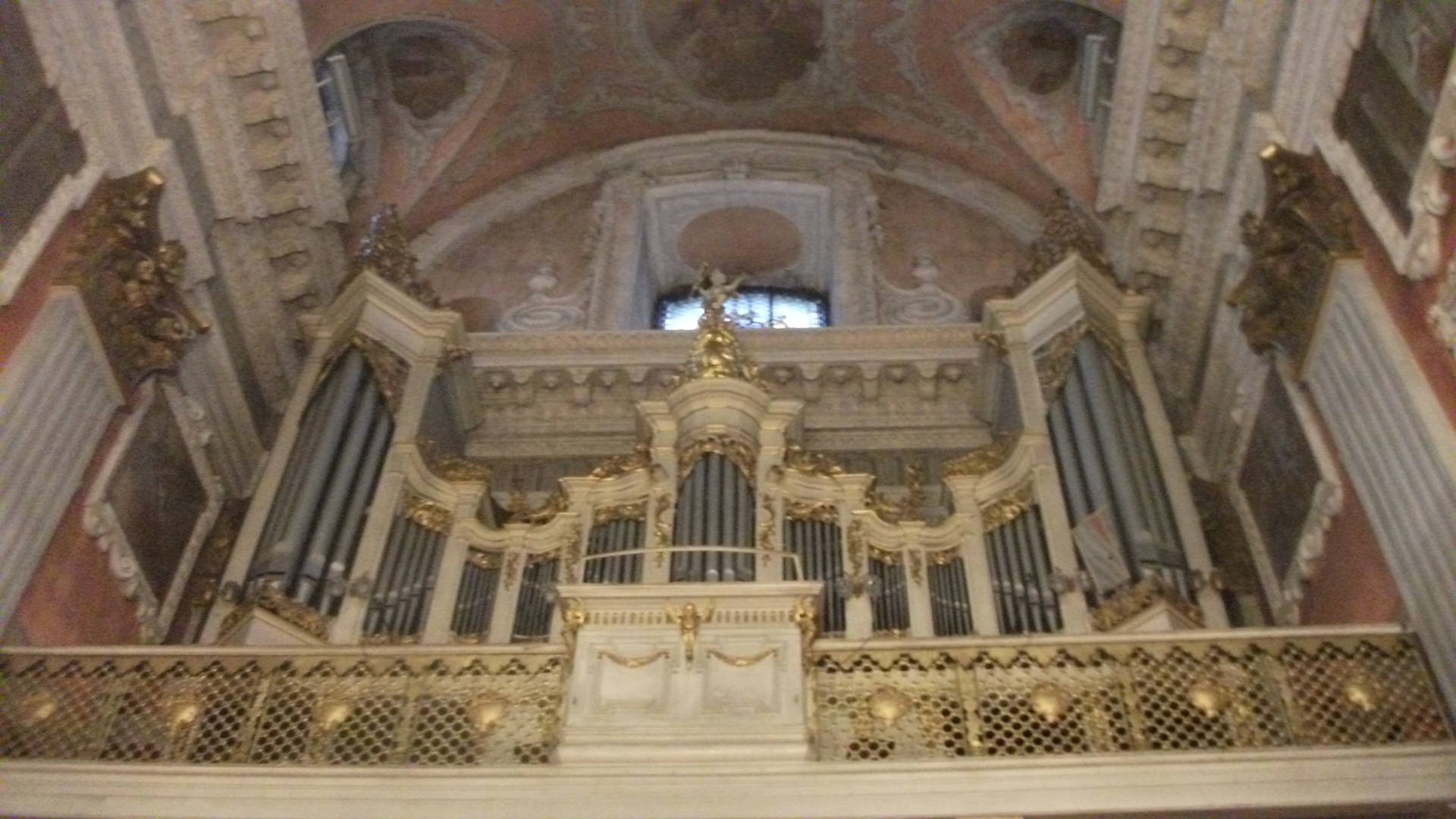 The interior od the church is in the Rococo style with the exception of the Pac Chapel, which is late Baroque in the exterior, and rather Classical in the interior
The interior od the church is in the Rococo style with the exception of the Pac Chapel, which is late Baroque in the exterior, and rather Classical in the interior
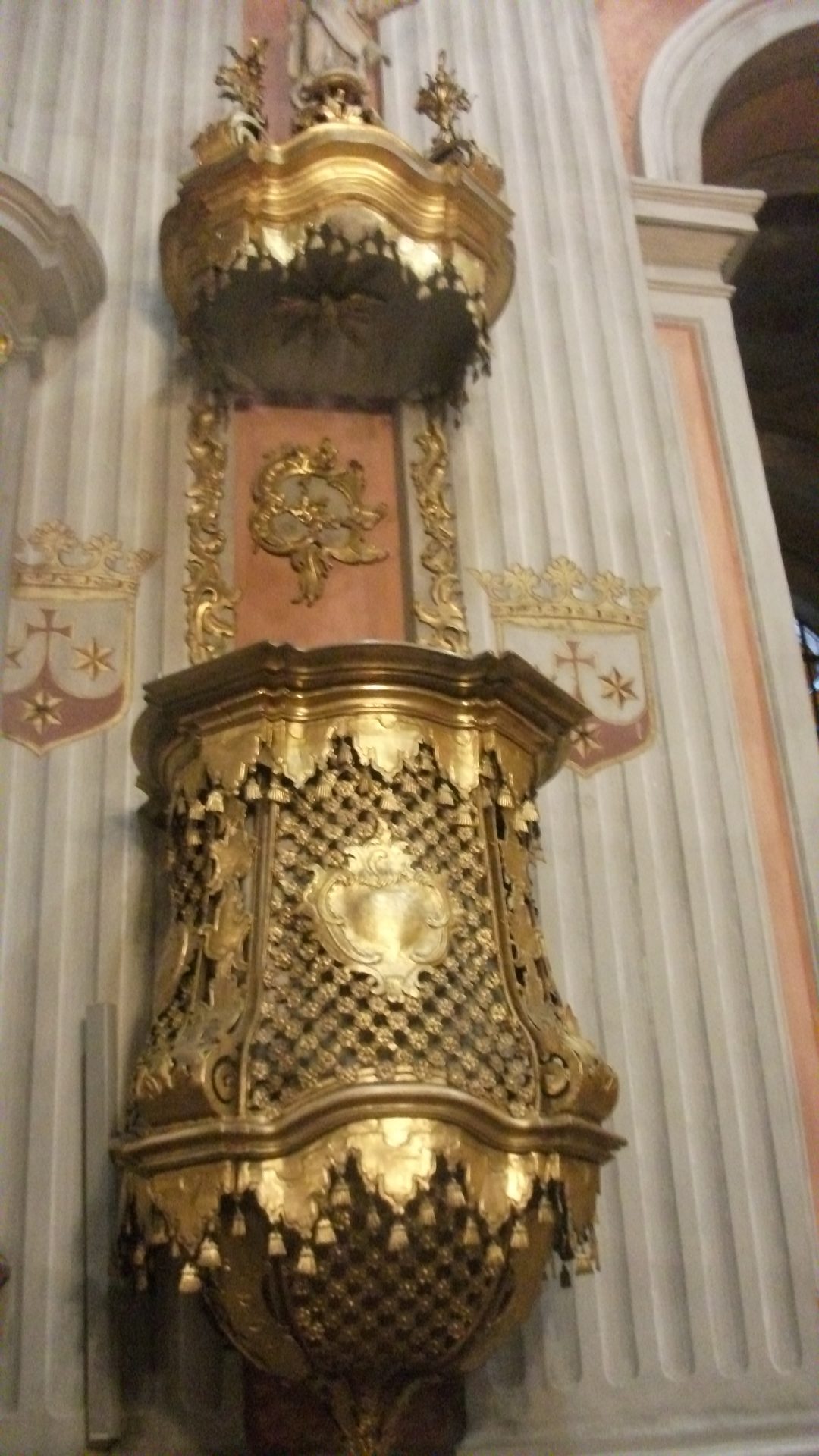 Impressive, gently-curved church pulpit in the Rococo style is created from wood and gold-plated tin in the second half of the 18th century
Impressive, gently-curved church pulpit in the Rococo style is created from wood and gold-plated tin in the second half of the 18th century
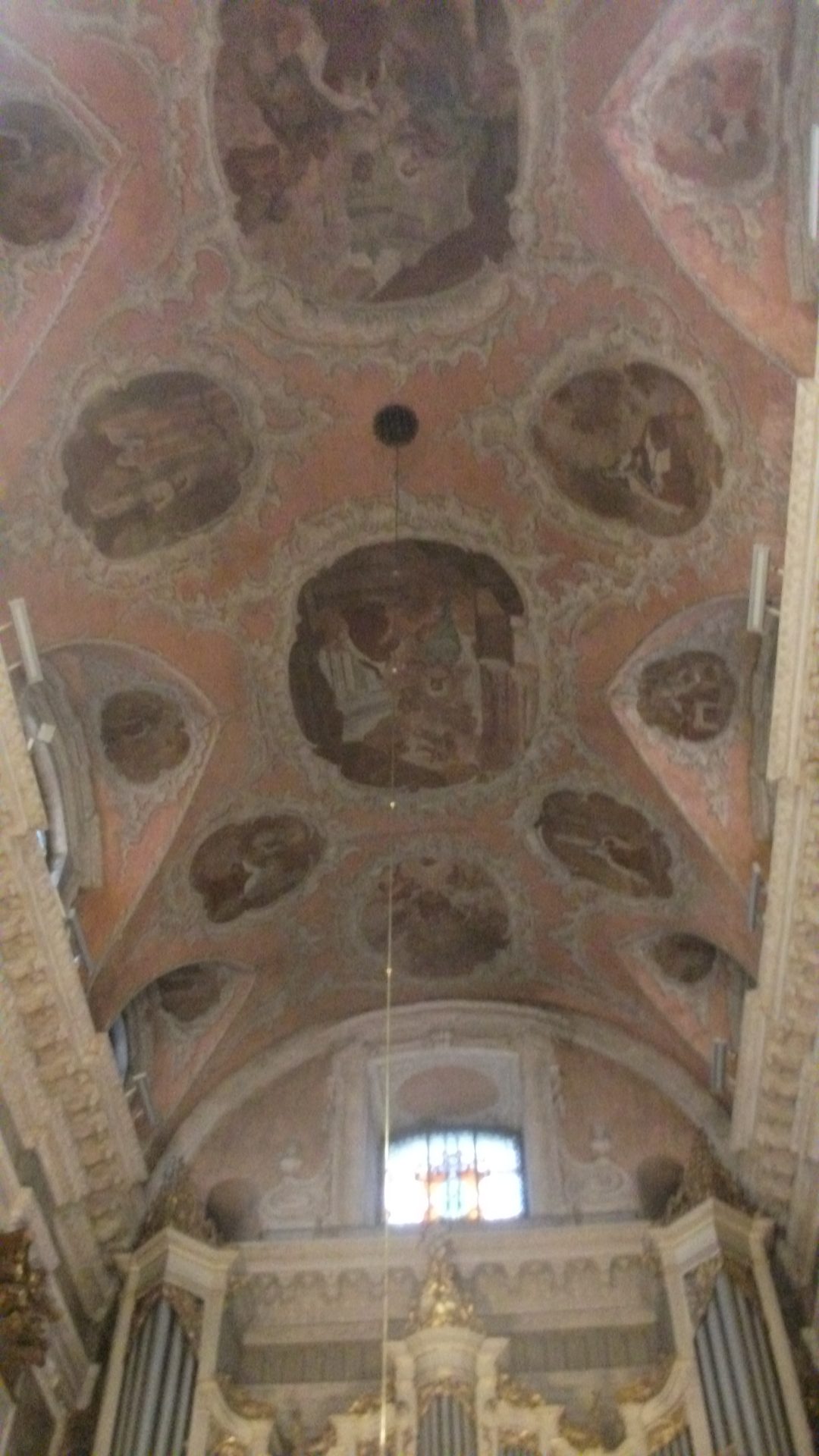 The church’s mural painting is the only one of its size remaining in Lithuania. One arch depicts 19 scenes from St. Theresa’s life
The church’s mural painting is the only one of its size remaining in Lithuania. One arch depicts 19 scenes from St. Theresa’s life
All photos are copyrighted by Vladislav B. Sotirovic
© Vladislav B. Sotirovic 2020
RELATED POSTS
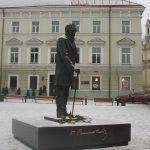
A monument to dr. Jonas Basanavičius in Vilnius in front of the building of the Lithuanian National PhilharmonicDr. Jonas Basanavičius chaired the session of Lithuanian Council that adopted the Act of Independence of Lithuania on 1918-02-16. He was the first to sign the Act of the Proclamation of the Lithuanian IndependenceBalancing between Lithuanian and Polish interests, he refused to participate in the opening of the Polish Stefan Batory University (today Vilnius University)All photos are copyrighted by Vladislav B. Sotirovic© Vladislav B. Sotirovic 2020
Continue Reading
The fortifications at the top of Tower St. have been restored and today form the Bastion Museum of the original early 17th century BarbecanA view from Tower St. on St. Casimir church (early 17th century Baroque style)Tower St. with the building of the former Augustine monastery (left)All photos are copyrighted by Vladislav B. Sotirovic© Vladislav B. Sotirovic 2020
Continue Reading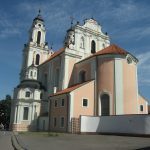
It was built by the Benedictine Sisters near their convent. It acquired its present-day appearance after a great fire in Vilnius in 1737. The church has a rich interior decorated with stucco mouldings and artificial marble. Today the church is restored and adapted for concerts. It also hosts the International Christopher Summer Music FestivalFlanking the church on Vilniaus Street, a particularly elegant Chapel of Providence was erected in 1641 and rebuilt in 1746The single-nave church has 9 magnificent Late Baroque altars and a pulpitAll photos are copyrighted by Vladislav B. Sotirovic© Vladislav B. Sotirovic 2018
Continue Reading
This short (250 m), narrow and crooked street with Baroque and Classical houses is surrounded by curving, walls, ancient façades and typical 17th and 18th-century courtyardsIn Bernardinų St. in the house No. 11 a famous Polish-Lithuanian poet Adam Mickiewicz lived in April-June 1822. His apartment is located on the left side of the ground floor which is today transformed into the museumBernardinų St. connects the ensemble of the Churches of St. Anne and Bernardines with Pilies St. In 16th century, it was a section of a road connecting the complex of royal castles with the Bernardinų Gate of the cuty defensive wall All photos are copyrighted by Vladislav B. Sotirovic© Vladislav B. Sotirovic 2020
Continue Reading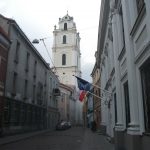
In this street, it was used to be a market place where it meets Pilies street. The first Town Hall is also believed to have stood on this spot Pharmacy house in St. John St. No. 5. Georg Schulz's pharmacy operated in this house since 1639. During the war in 1655, the house was burned down. In 1781, pharmacist Koszyk acquired the ruined building and reconstructed it The Pac estate. Since 1628, the building belonged to the Pac magnate family of the Grand Duchy of Lithuania. In 1783, the dilapidated building was bought, renovated and decorated by the Chancellor of the Grand Duchy of Lithuania - Alexander Michael Sapieha. Currently, the building belongs to the Polish Embassy All photos are copyrighted by Vladislav B. Sotirovic© Vladislav B. Sotirovic 2020
Continue Reading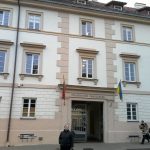
Hostel Courtyard of the Old Campus of the Vilnius UniversityIn the late 19th century all houses of the courtyard were reconstructed and in the early 21st century water supply and sewerage systems were installed. Apartments were rented in those housesInterior of the present-day Faculty of Philosophy. After the reconstruction was completed in the spring of 2005, the Faculty of Philosophy was relocated hereAll photos are copyrighted by Vladislav B. Sotirovic© Vladislav B. Sotirovic 2023
Continue Reading
The organ, made by famous German master Adam G. Casparini in 1776, is one of the most valuable cultural monuments of Lithuania. The organ itself is the only surviving original 18th-century instrument in LithuaniaThe church has many Baroque frescoes. In the cupola, there is a multi-figural composition "Apotheosis of the Holy Spirit" (neo-Baroque, 19th century)The altars and the pulpit are lavishly decorated with round and relief sculptures and ornamentation All photos are copyrighted by Vladislav B. Sotirovic© Vladislav B. Sotirovic 2018
Continue Reading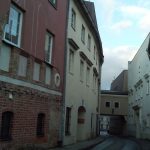
A former Gothic façade that was uncovered at Karmelitų Str. around Rūdninkų Square in the Old Town of VilniusThe back-side façade from the inner courtyardThe back-side façade from the inner courtyard. The house is located on the territory of WWII Large Jewish GhettoAll photos are copyrighted by Vladislav B. Sotirovic© Vladislav B. Sotirovic 2020
Continue Reading
The Church of the Heart of Jesus is a significant monument of Baroque (finished in 1756). It is the only Roman Catholic church in Lithuania to be built along a Greek Orthodox cross designThe church has a large octagonal cupola (dome) and a very reach the elegant exterior. The interior is no less magnificent, although it was severely damaged during the Soviet timeAfter 1945, a prison was established in the church and convent buildings. The church interior and the plan of the convent buildings were transformed. After 1990, the sacral buildings are returned to their former ownersAll photos are copyrighted by Vladislav B. Sotirovic© Vladislav B. Sotirovic 2020
Continue Reading
The garden reminiscent of a so-called secret garden (giardino segreto) could have been planned in the style of an Italian parkThe Renaissance Garden was located between the Royal Palace and the Upper Castle with the Tower of Gediminas. The stairs and other elements were designed by the Italian architect and sculptor Bernardino Zanobi da Gianottis. An Italian priest, Francesco, took care of the garden plantsEvidence of the history of the garden lies in the relics from various periods that survived in the cultural layers of the Lower Castle with the Renaissance Royal PalaceAll photos are copyrighted by Vladislav B. Sotirovic© Vladislav B. Sotirovic 2020
Continue Reading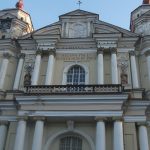
The founder of the church was a Grand Hetman and Vilnius Voivode of the Grand Duchy of Lithuania. The 17th-century church's façade is modest, however the interior is richly ornate with a number of stucco mouldings The church was built to mark the liberation of Vilnius from Moscow (The 1655-1661 War) and the founder's own escape from the hands of rebellious soldiers. The interior was created by the Italians G. P. Perti and G. M. Galli, who decorated it with more than 2,000 stucco mouldings The chandelier was created in 1905 in Riga and represents the Biblical Noah's arkAll photos are copyrighted by Vladislav B. Sotirovic© Vladislav B. Sotirovic 2018
Continue Reading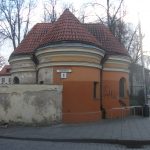
The small garden between the church and the street used to be a cemetery. It is still occupied by a mausoleum built in 1708 for the Suzin's familyThe Suzin's family chapel was functioning as a souvenir shop during the Soviet administration The Suzin's family mausoleum chapel is located on the corner of Trakų St. and Franciscan St. in the Old Town in VilniusAll photos are copyrighted by Vladislav B. Sotirovic© Vladislav B. Sotirovic 2020
Continue Reading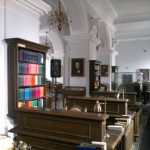
The architect whose name is most closely associated with Vilnius University is the Jesuit Tomas Zhebrauskas who founded (together with Elžbieta Oginskaitė-Puzinienė, the daughter of the famous manor owner Mykolas Oginskis) and designed the observatory, in 1753. The White Hall belongs to the observatory The astronomical observatory of Vilnius University is one of the oldest in Europe and the oldest in the former Polish-Lithuanian Commonwealth. It was famous in Europe for its astronomers and their works until it was closed after the fire of 1876The White Hall today is, in fact, a reading room of the Library of Vilnius UniversityAll photos are copyrighted by Vladislav B. Sotirovic© Vladislav B. Sotirovic 2023
Continue Reading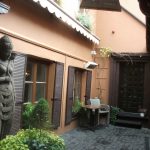
The building of Vilnius Gymnasium of Vytautas the Great - the first gymnasium in Lithuanian language est. in Vilnius at the beginning of the 20th centuryThe backside of the Church of Our Lady, Comfort of the Afflicted seen from Augustijonų Street in Vilnius Old Town. In Soviet times the church was used as a warehouse, and in 1967 the interior was divided into several shops by the construction of concrete floors. The building is today in urgent need of restorationThe entrance to the Jesuit Gymnasium in Augustijonų Street in Vilnius Old Town. Behind the gymnasium is St. Casimir ChurchAll photos are copyrighted by Vladislav B. Sotirovic© Vladislav B. Sotirovic 2019
Continue Reading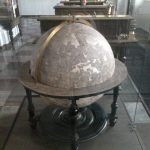
Vilnius University was the first observatory center in Eastern Europe and the 4th in the worldWhite Hall now houses unique astronomical instruments and a reading roomThe narrow staircase leads to the observatory tower, which reveals a panorama of the Vilnius Old TownAll photos are copyrighted by Vladislav B. Sotirovic© Vladislav B. Sotirovic 2023
Continue Reading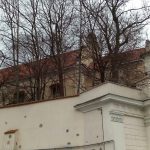
The church was originally Gothic but in 1750-1755 it was restored according to design by Franz Ignatius Hoffer and acquired some late Baroque and Rococo featuresNearby the church building stand the 17th-18th-century buildings of the Carmelite Monastery which had a rich archive and library. A study centre opereted there. In 1797-1944 it housed the Ecclesiastical Seminary Today the buildings are used by the Centre for Book Research and Libraries, and the church is closed to the publicAll photos are copyrighted by Vladislav B. Sotirovic© Vladislav B. Sotirovic 2020
Continue Reading
In the mid-19th century, Russian architect Nikolaj Chagin added a portal with statues of the Atlantes. In this palace Eustachy Tyszkiewicz held part of his archaeological collections that constituted the basis of the Museum of Antiquities (the first public museum in Vilnius) In 1863, it was a secret gattering place of the Lithuanian-Polish rebels against the Russian administration There is the Tyszkiewicz family coat of arms on the pediment - an aristocratic family who owned extensive estates in Lithuania. At the present time, the building is occupied by the Vilnius Gediminas Technical University (VGTU)All photos are copyrighted by Vladislav B. Sotirovic© Vladislav B. Sotirovic 2020
Continue Reading
One house in Augustijonų Street in Vilnius Old Town. Behind the house is the Church of Our Lady, Comfort of the AfflictedA view from Augustijonų Street on the top of the tower of the Church of Our Lady, Comfort of the Afflicted. This church used to be known for its lavish decoration, but the altars, pulpit, and organ were removed in 1852 when it was transformed into a Russian Orthodox Church One courtyard in Augustijonų Street in front of the Church of Our Lady, Comfort of the AfflictedAll photos are copyrighted by Vladislav B. Sotirovic© Vladislav B. Sotirovic 2019
Continue Reading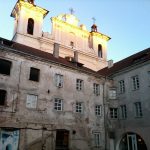
In Old Town in Vilnius, at the Church of the Holy Spirit, on St. Ignatius St., a Dominican monastery was established in 1501At the time of Napoleonic Wars (in 1812) the Dominican monastery of the Church of the Holy Spirit was used by the French army as a hospitalThe monastery was converted into a prison by the Russian authorities in 1807. Corridors are decorated by frescoes from the 18th centuryAll photos are copyrighted by Vladislav B. Sotirovic© Vladislav B. Sotirovic 2021
Continue Reading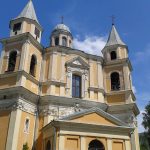
The interior sculptural décor was created by Pietro Perti (Italian master) in 1700-1705. Twin towers were built on in the 18th century. It was built by the efforts of Casimir Sapieha the Younger (1637-1720) in 1694-1717 On the façade frieze two Christian soldiers taken into captivity by the Muslims are represented. The main goal of the Trinitarian Order was returning such captives to their homelands The church has an impressive cupola (dome), the interior is adorned with stucco relief works and sculptures - a large part of them is survived. The church is a "sister" to the Church of St. Peter and St Paul in Vilnius (Antakalnis)All photos are copyrighted by Vladislav B. Sotirovic© Vladislav B. Sotirovic 2019
Continue ReadingJonas Basanavičius Monument in Vilnius
Tower St. (Bokšto g-ve) in Vilnius
Church of St. Catherine and Former Benedictine Monastery
Bernardinų Street in Vilnius
St. John Steet in Vilnius
Bursa (Student Dormitory) Courtyard at Vilnius University’s Old Campus
Dominican Church of the Holy Spirit (Interior)
House-Monument with Gothic Façade
Church of the Heart of Jesus and the Convent of the Visitationists in Vilnius
The Renaissance Palace Garden in Vilnius
Church of St. Peter and St. Paul in Vilnius
The Suzin’s Family Mausoleum Chapel
The White Hall of the Old Campus of Vilnius University
Augustijonų Street (II)
Astronomic Instruments at the White Hall at Vilnius University
The Church of St. George the Martyr
Tyszkiewicz Estate in Trakų St. 1 in Vilnius
Augustijonų Street (I)
A Dominican Monastery at the Church of the Holy Spirit
Church of Our Lord Jesus and the Trinitarian Monastery

